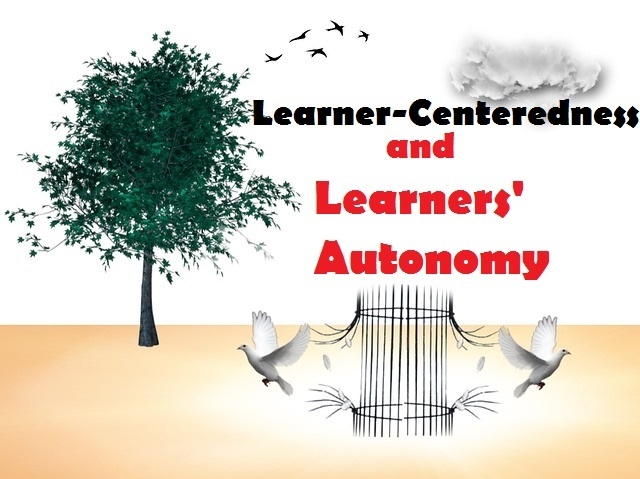Challenges Faced By Teachers In a Diverse Classroom
In contemporary times, the world has seen some great transformations in every field. One of these transformations has been diversity across various disciplines of life. Due to this, the education sector has also witnessed diversity in recent times.
Now, the important thing to note here is that diversity in a classroom can be seen from different perspectives. It can either be due to cultural differences or different learning abilities and styles of children. Furthermore, with the education sector getting digitalized, it becomes possible for students to attend online classes from any part of the world.
This has greatly increased the interaction between students from different cultural backgrounds. As a result, the students can get more exposure while learning about different cultures. Also, it tends to enhance their knowledge base. Additionally, every student is different and so are their educational needs. To cater to their needs, teachers have to take proactive steps in identifying them and later altering their teaching methods. As a result, the students would be able to grasp new concepts with ease.
So, a diverse classroom for the learners can be quite beneficial for them in the long run. But at the same time, it has become a challenge for the teachers in terms of managing the classroom effectively.
If you have also faced difficulties while handling a diverse group of students, then you can very well relate to it. For a better understanding, we present you with different challenges a diverse classroom has along with the perfect solution to overcome them.

Difficulties for teachers while managing a diverse classroom
1.Promoting high learning engagement
You would also agree that keeping your students engaged in a classroom has always been a tough task for you. Now with increasing diversity in the classroom, it has become a much more difficult task as compared to earlier times. To explain, in a diverse classroom, given the variance in learning requirements, the engagement levels would vary too. It becomes challenging to bring students on the same page when they come from diverse experiences and socio-cultural backgrounds. This can disrupt learning engagement in the classroom more often than not.
If your students are not fully indulged in the class, they are less likely to learn something new. This can be a major obstacle for you to demonstrate a new topic to your students. Now, this is where as a teacher you need to look outside the box. You need to explore ways in which you can engage every student.
What can be done?
To overcome this obstacle, you would need to identify the root cause behind it. Are your students not able to adjust to each other, or are they finding it difficult to keep themselves focused in the classroom? Once you have identified the root cause, you can take effective measures to eliminate it. For instance, you can have a small interactive activity in the last 5 minutes of class. Also, you can personalize the learning process by sharing examples in which the students are interested. These steps can help you to keep the students fully engaged to a great extent.
2. Determining the right pace of teaching
As discussed, different students have the different caliber to learn something new. Also, with students coming from different cultural backgrounds, their learning styles may differ from others. Due to this, teaching the students with pre-defined learning methods will not serve the right purpose for their individual learning needs. This can prevent a brief 45-minute session from being productive for the students. All in all, the challenge is that because of variations in learning pace, the learning outcomes will have large variations too in a diverse classroom. You may find it difficult to set a pace of learning that all students cope with.
What can be done?
To counter this situation, you would be required to alter your teaching style and be more flexible. For that, you can come up with alternative methods to explain a particular topic in a different manner. Let’s say, some of your students are finding it difficult to match up to your pace. For that, you can slow down your pace to make it easy for students to learn a new concept. Apart from managing your pace, you can relate the topic with the student’s interest to explain the same concept in a much easier way.
This can greatly help those students who are finding it difficult to understand a topic. As a result, you are able to fulfill their educational needs. Therefore, using alternative teaching methods can provide you with much-needed assistance to fulfill the individual educational needs of your students.
3. Overcoming the cultural and language barriers
Another challenge that a diverse classroom presents for teachers is cultural differences and language barriers. To explain, cultural barriers may prevent students from exploring a topic or may also make them feel nervous. For instance, let’s say you have a few students in your class who come from a highly conservative background. So, if your lesson is on LGBT rights and issues, from the virtue of their culture, they might show great resistance to the subject matter and hence, high disengagement. Along similar lines, there can be communication gaps in a classroom when you have students from different linguistic backgrounds.
These examples explain how cultural and language barriers can hinder the flow of information and knowledge sharing in the classroom. Also, the communication barriers can hinder collaboration in the classroom
Moreover, most of the students would be having different beliefs and values. Due to this, what is considered right in your culture may not be the same in some other cultures. This can result in a conflict of opinions within the classroom.
What can be done?
To avoid these situations, you can use various language translational applications in your classroom. This can help you to overcome the language barriers which will eventually reduce the communication gap. Apart from this, you should get familiar with different cultures along with their different beliefs and values. As a result, you would have a better understanding of what things you need to avoid while you are interacting with diverse groups of students. Also, through effective teaching and patience, you should look to bridge the cultural gaps.
4. Managing discipline
There can be a few instances where the students would have some doubts in between sessions. This is because each student possesses different learning abilities and would learn a new topic at their own pace. Due to this, they might disrupt the whole class if they keep on asking the doubt one after the other. This might also lead to a major hindrance in the learning process of other students.
What can be done?
To counter this situation, you can set aside a different time slot where all the doubts of the students would be taken and resolved. This way, there would be no disruptions while you are delivering sessions. Also, there it will not hamper the learning process of other students in the classroom. Therefore, managing discipline is one of the major classroom management skills that can ensure the continuous learning process for the students.
5. Fostering collaboration
It is a proven fact that working in a team can produce much better results in contrast to working individually. The same applies in a classroom as well. There are several activities that require students to function together as a team. But in a diverse classroom, this can be a tough task for you as a teacher to encourage student collaboration. This is mainly because students belong to different cultural backgrounds which might restrict them from working in a team.
What can be done?
To ignite the spirit of teamwork, you can encourage your students to achieve common goals while working together. This way, they would like to divide the given tasks into smaller units among themselves. As a result, they would be able to realize the importance of teamwork as each student would be responsible for their own task. Once they are able to complete their tasks, they would be able to accomplish the set objectives while working together.
To encapsulate, with classrooms becoming more diverse in nature, it has become the need of the hour for teachers to manage them effectively. The above-mentioned points demonstrate how challenging it can be for you as a teacher to handle diverse groups of students. But thankfully, they are some perfect ways along with them that can assist you to manage a diverse classroom in a much better way.
Guest post By Jessica Robinson
About the author:

Jessica Robinson loves to write interesting and knowledgeable blogs regarding business management, education and life to satiate the curiosity of her lovely readers. Currently, she is serving as a content manager at the ‘Speaking Polymath’. Every piece of content that she writes demonstrates her immense love and passion for her profession.







